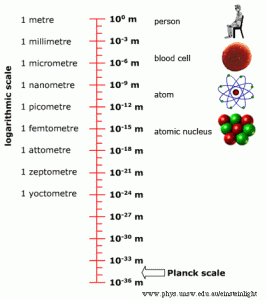Science Seen Physicist and Time One author Colin Gillespie helps you understand your world.
Planck-scale: The Answer to Figuring Out Our Weird Universe New fundamentals needed now.
The messages are clear but are we listening? For almost a hundred years we’ve known the universe has been expanding since it began. For almost twenty years we’ve known the expansion has been accelerating for billions of years. With each new discovery physics hastens to adjust its theories to fit the new facts. Now more precise measurements seem to say the universe is now expanding faster than physics can explain. New fundamental physics focused on the Planck-scale universe could answer many questions.
Though physics’ propensity to turn a deaf ear is a big problem, it is not exactly news. Two comments on Facebook quickly said so. Laurent Keller says instead of ‘faster than physics can explain’ we should say ‘faster than our current knowledge of physics can explain. Which is quite poor really, explaining only 5% of reality, the rest being made of something dark and unknown.’ He means so-called Dark Energy and Dark Matter. Dan Woods says ‘Reality is the same, evidence stays the same, why doesn’t the science change?’ Well, although those new measurements just tweaked the evidence, they are both right: Our current physics is deep in doo-doo and the message is not getting through. How so? And what to do about it?
The universe is a fantastic laboratory. As more and better data come in from new telescopes we should not be surprised if they challenge the status quo. That is the whole idea. But physicists are loath to abandon long-treasured precepts. Rightly so; they represent a huge intellectual investment. So there is strong motivation to try to keep the injured theory alive. But at what cost? And for how long?
In 1900 physics theory seemed complete. But observations showed two small discrepancies. Soon the whole edifice came tumbling down. The resulting scientific revolution now forms the basis of the world economy. Today’s physics is replete with dozens of major discrepancies. It is time for a new scientific revolution.
Where did physics go wrong? Some three hundred years ago Isaac Newton and Gottfried Leibniz developed the math of continuous variables, called calculus. A hundred fifty years ago, when Bernhard Riemann laid the foundation for modern geometries, he showed we must assume either that space is continuous or that it is made of tiny discontinuous bits. Conventional physics today uses Riemann’s geometry with the first assumption. It is increasingly clear that this assumption, though convenient, is wrong. At Planck scale, space is made of indivisible bits.
A second mistake haunts the halls of physics. In 1905 Hermann Minkowski built on Einstein’s special relativity and sold the physics world on spacetime, which folded time and 3-D space into a single 4-D concept. Its virtue too is convenience (it allowed physicists to cling to Euclidean concepts of geometry and space). And its vice too is that, taken seriously, it is wrong. As Daryl Janzen points out, the universe is fundamentally 3-D and time is altogether distinct from space.
 Two new fields of physics are concerned with the structure of space at the very tiny sizes known as Planck-scale: string theory and quantum gravity. But so far neither is developing coherent Planck-scale concepts of: What is space? and What is time? Thus leading quantum-gravity theorist Carlo Rovelli could say a few years ago that ‘Fundamental physics is today in a peculiar phase of deep conceptual confusion.’
Two new fields of physics are concerned with the structure of space at the very tiny sizes known as Planck-scale: string theory and quantum gravity. But so far neither is developing coherent Planck-scale concepts of: What is space? and What is time? Thus leading quantum-gravity theorist Carlo Rovelli could say a few years ago that ‘Fundamental physics is today in a peculiar phase of deep conceptual confusion.’
What is missing is not so much physics as philosophy. We need a conversation about the universe at Planck scale. Unfortunately few philosophers work on this. Those who do tend to build on a foundation of quantum mechanics and general relativity, in my view a profound mistake. Quantum mechanics and general relativity offer nothing but confusion in the beginning; they should arise naturally when we arrive at the end. We need to begin anew. We need a Planck-scale ontology. Start with: What exactly are those Planck-scale bits of space?
In Time One I say they are tiny Calabi-Yau Planck-sized volumes of string-theory fame and that we should take them seriously (which, curiously, string theorists don’t). It says the universe expands because they replicate. This underpins a new ontology that can answer many questions. It can lead to new physics and explain the vast variation of the universe’s expansion speeds all the way from 10-43 s, when it was far faster than the speed of light, to billions of years after its beginning, when expansion is still too fast for our old equations.
Image credit: University of New South Wales

No comments yet.